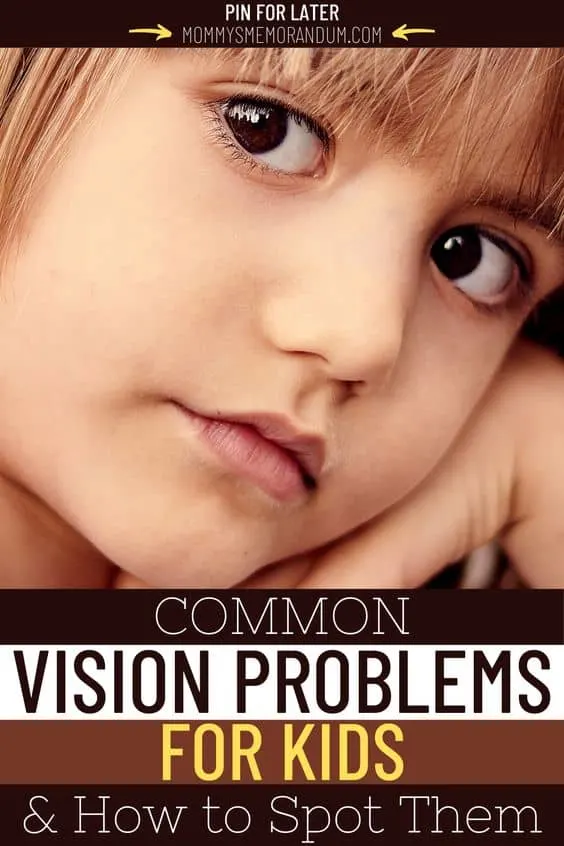When your toddler runs into the coffee table for the fifth time in a day, you may just shake your head and wonder how long it will take for his coordination to develop. While these little bumps and bruises are to be expected for any child just taking his first steps, the thought that the problem could be vision-related might not even cross your mind.
Nobody wants to think that a small child or even an infant could have vision problems, and yet, it’s not as uncommon as people might think.
Luckily there are often signs that you can keep an eye out for (so to speak) so that you can get take your child for testing to ensure that his vision develops properly.

Common Vision Problems for Children:
You should first know that it can take as long as six to eight months for your child’s vision to fully mature (although it may be more or less – all children develop at different rates).
Until then, they may have trouble with focus and depth perception.
But even at this stage, you may still see issues begin to arise, and some are pretty easy to spot.
It’s no wonder we have astigmatism solutions too, which are highly effective.
For example, Cataracts may be present upon birth (or they could develop during the formative years), and they can be easily identified as a cloudy patch on the eye.
Since they cause a visual obstruction, they could cause your child’s vision to develop abnormally.
As a result, most doctors will recommend surgery to remove them as soon as possible, and the operation is considered safe for infants as young as several weeks old.
Amblyopia is another condition that is generally easy to identify.
It is often referred to by the more common term of “lazy eye,” It occurs when one eye is weaker than the other, causing it to turn inward or outward or in some cases, track differently than the dominant eye.
There are many causes for this condition: it could be that the pathway between the brain and the eye is weak, for example, or your child could suffer from strabismus, whereby the muscles around the eyes don’t work together properly to ensure that both eyes focus on the same object.
Whatever the case, it is important to have your child assessed immediately to correct the problem. Your child has the best opportunity for vision to develop correctly.
Many children also develop common vision problems like nearsightedness (myopia), farsightedness (hyperopia), and/or astigmatism.
All of these may be corrected with glasses, contact lenses, or surgery (although you must do your homework to find a laser eye surgeon who has worked with children before).
The experts at ezcontactsusa.com say, in truth, you should probably try either glasses or contact lenses first in these cases since they are less invasive.
Although many people don’t feel comfortable giving contacts to children or think their child is too young, even young kids can be good candidates for this type of vision correction.
School-age kids may prefer it as an alternative to wearing glasses.
It’s always important to keep your eyes in good condition.
